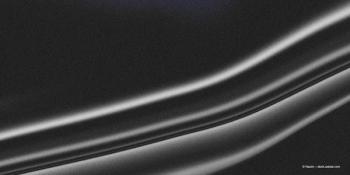
Port Delivery System with ranibizumab targets nAMD
Findings from the Archway trial showed that the PDS effect is long-lasting, consistent, and comparable to those seen with monthly injections.
Reviewed by Peter A. Campochiaro, MD
The Port Delivery System (PDS) with ranibizumab (Roche) evaluated in the Archway trial (NCT03677934)was shown to continuously release steady drug concentrations during the every-24-week refill period. By doing so, the system maintained the visual acuity (VA) and lowered the treatment burden of patients with neovascular age-related macular degeneration (nAMD) compared with monthly intravitreal injections.
Peter A. Campochiaro, MD, George S. and Dolores Doré Eccles Professor of Ophthalmology and Neuroscience at Wilmer Eye Institute, Johns Hopkins University School of Medicine in Baltimore, Maryland, presented the pharmacokinetic findings on behalf of the Archway study team.
Related:
In addition to the lower treatment burden, the investigational PDS has the potential to improve real-world visual outcomes in patients with nAMD, Campochiaro said. The PDS in this phase 3 trial contained 100 mg/mL of ranibizumab refilled every 24 weeks in contrast to the 0.5-mg intravitreal ranibizumab injections patients received on an every-4-week schedule.
Data showed that the primary outcome of the Archway trial, the visual outcomes obtained using the PDS, was equivalent to that achieved in patients treated monthly with intravitreal injections of ranibizumab. The noteworthy result is that patients using the PDS implant received 5 times fewer treatments through week 40 compared with those receiving monthly injections.
How the PDS works
The ranibizumab released from the implant is mediated by passive diffusion along a concentration gradient between the implant reservoir and the vitreous cavity. The diffusion rate depends on the concentration of the drug in the implant reservoir, Campochiaro explained.
Related:
The implant release rate is slower than the rate at which the drug is eliminated from the eye, which in turn is slower than the rate at which the drug is eliminated systemically.
“The serum pharmacokinetic profile directly reflects the release of ranibizumab from the implant,” he said.
Pharmacokinetics
The second end point of the study was the characterization of the pharmacokinetics of the drug released from the PDS implant. Investigators carried out serum sampling in all patients at the time of randomization and at weeks 4, 24, 36, and 96; at some study sites, sampling was done on days 2 and 7 and at weeks 12, 48, and 72.
In patients randomized to monthly injections, sampling was done 1 to 5 days after injection to obtain the peak serum concentrations of the drug. Patients with the PDS implant could also opt for sampling from the aqueous humor at randomization, at the time of refill exchange, and 4 weeks later.
Related:
The investigators were able to evaluate serum pharmacokinetics in 94 patients with the PDS implant, which reflected ranibizumab release from the implant, and in 79 patients receiving monthly intravitreal injections, which reflected the ocular ranibizumab elimination rate from the injected eye.
The serum concentrations of ranibizumab in the patients with the PDS implant were similar at all time points and higher than the trough concentrations found in the monthly injection group. During the first 24-week interval, the mean serum concentrations of ranibizumab ranged from 419 pg/mL at week 4 to 340 pg/mL at week 24, decreasing by less than half during the 24-week interval.
Related:
In contrast, the peak and trough serum levels after the first monthly intravitreal injection were, respectively, 1880 pg/mL and 58.1 pg/mL. These levels halved approximately 5 times during the 4-week interval.
The mean aqueous ranibizumab value at week 48, the end of the second refill/exchange interval, was approximately 1.5 mg/mL in the PDS group compared with 0.43 mg/mL in the monthly injection group. Four weeks after the refill exchange at week 28, the mean drug level in the PDS group was 4.5 mg/mL.
“These pharmacokinetic data, which represent excellent maintenance of ranibizumab levels in the PDS group throughout the entire refill exchange intervals, explain the remarkable maintenance of the best-corrected VA and macular thickness in the Archway trial,” Campochiaro said.
Related:
He added that Archway’s results indicated that the PDS effect is long lasting, consistent, and comparable to results seen with monthly injections.
“The device provided continuous release of ranibizumab over the every-24-week interval at steady concentrations of the drug that were well above the trough levels…associated with the monthly 0.5-mg injections,” Campochiaro concluded.
Peter A. Campochiaro, MD
E: pcampo@jhmi.edu
This article is adapted from Campochiaro’s presentation at the virtual Association for Research in Vision and Ophthalmology Annual Meeting. He is an investigator for Genentech/Roche Inc.
Related Content:
Newsletter
Keep your retina practice on the forefront—subscribe for expert analysis and emerging trends in retinal disease management.












































